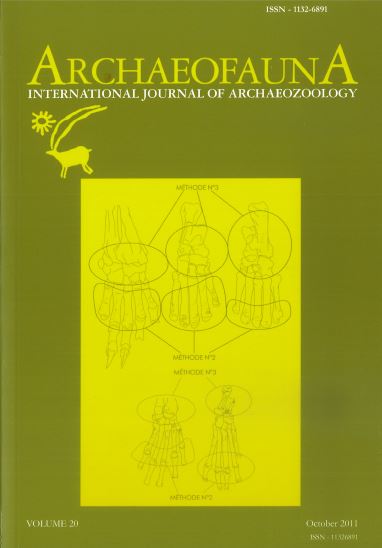Depósitos de ovicaprinos en ámbito doméstico ibérico. El ejemplo del Poblado de Ca n’Oliver (Cerdanyola del Vallès, Barcelona)
Keywords:
Animal deposits, Ovicaprines, Iberian domestic ritual, Inhumations of childrenAbstract
Sacrificial deposits of animals from the Iberian Iron Age site of Ca n’Oliver (Cerdanyola del Vallès, Barcelona) follow a stereotyped pattern that allow one to group those domestic rituals with other cases documented for Catalonia, mainly in the coastal areas that classical texts identify as the Laietania and Cosetania regions. Documented mainly during the 4th and 5th centuries BC, such rituals occasionally reached to the 2nd century BC. The main species represented are sheep (Ovis aries) and goat (Capra hircus), with chicken (Gallus gallus) and dog (Canis familiaris) constituting marginal items. A spatial association with inhumations of human children beneath flagstones suggests that the sacrifices were probably associated with offerings made on the child’s tomb. Finally, we entertain the idea that the gradual rise of imported ceramics at many of these sites raises the possibility of a causal link with Greek sacrificial norms.

